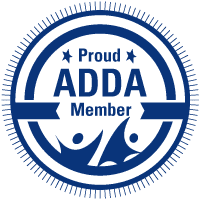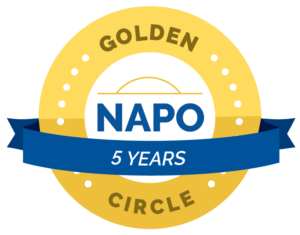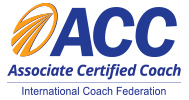“It’s so hard to get anything done with all these distractions.”
Heard it.
Felt it.
Said it.
Most workplaces are full of distractions, especially in the ever-increasing open office concept:
- Excessive noise (piped in music, printers, copiers, conversations, etc.)
- Lack of privacy (no more closing your office door)
- Constant physical and electronic interruptions (co-worker drop-ins, e-mail notifications, IM notifications, calendar notifications, etc.)
According to the most recent Udemy report, the top two distractions in the workplace are chatty coworkers (80%) and office noise (70%). Frankly, I was a little surprised that smartphone interruptions weren’t higher on this list, but for the younger workforce, 69% acknowledged that smartphone distraction interfered with their concentration.
Chatty coworkers and office noise appear to be the culprits, but how pervasive is the problem? HCAmag.com reports the findings from the 2013 Workplace Productivity Report revealed that “55% of people are frequently distracted throughout the workday with only 33% of those frequently distracted able to effectively get on with work and disregard distractions.” Yikes! If over half of the workforce is admitting to being distracted, how many truly are? What’s the cost of distraction? And how can we combat the distraction?
What’s the cost?
FastCompany did a survey of mostly high-tech companies and found that roughly half of the interruptions were self-directed (switching from a report to e-mail to texting to on-line research, etc.). The good news: 82% of interrupted work is resumed the same day. The bad news: it takes an average of 23 minutes and 15 seconds to get back on track each time our work is interrupted! To put that statistic into proportion: If you are performing a task that should take 30 minutes and you get distracted, that task could take up to 53 minutes.
How can we reduce distractions?
- Have a productivity plan. If you don’t know what you are being distracted from, tuning in to distractions is much easier.
- Say “No” or “Not right now.” Interruptions generally come in the form of “hey, Cindy, do you have a minute?” And we all know it’s never a “minute.” The best answer to keep on track may be to deflect or defer the interruption.
- Identify where you work best. Sometimes we work better in solitary environments. Sometimes we need the energy of others. Sometimes it is activity specific. A data-driven activity may be better done in solitary behind a closed door. A creative activity may be better done where there is a lot of energy. Figure out what works best for you for each task and plan your environment accordingly.
- Wear earplugs or headphones. Noise is a top distraction. If possible, tune it out.
- Send your phone calls to voicemail. Phones are for OUR convenience, not only for the convenience of others. We don’t need to be accessible 24/7. Block out time to answer calls or return voicemails.
- Turn off electronic devices. The constant barrage of input from our smartphones (Facebook, Twitter, news updates, etc.) keeps us tied to our devices. If you can’t turn your device off for extended periods of time, at least turn on Do Not Disturb for 30-45 minutes at a time.
- Check e-mail sparingly: One of the most productive people I know only checked her e-mail twice a day. She’d trained people that would read her e-mail at 8:00 AM and respond by 10:00 AM and again at 4:00 PM and respond by the end of the day. Batching her e-mail activities saved constant interruptions.
- Clear clutter. Your eyes see and your mind tries to process whatever is in front of you. “What am I supposed to be doing with that empty coffee cup?” “What’s the difference between the yellow and blue sticky notes?” “Do I really need two staplers?” Even though you aren’t deliberately thinking about something, your subconscious probably is. Clearing clutter will help you focus on the important things.
- Move any project not actively being worked on out of sight. Do you have 16 projects going at a time? I get it. To reduce distractions, move all the projects you aren’t working on out of sight. Or, if that’s not an option, stack them neatly on top of each other and put a big “Not What I’m Working On Now” sign on top of them (Thanks for the great visual Alan Brown!).
- Schedule in distraction time. You know how when you tell yourself you absolutely can’t have that chocolate bar, then all you can think about is that chocolate bar? Well, depriving yourself of an activity will do the same. Knowing you “can’t” check your Facebook feed will only keep you thinking about your Facebook feed. Instead, tell yourself “I will work on this project for 45 minutes, then I can surf Facebook for 15 minutes. And, yes, I’m suggesting you time not only your productivity time but also your allowed distraction time. My favorite timing device is the Time Timer. There are several options, find one that resonates with you.
Where do you find yourself getting distracted? What tip, trick or tool can you use to reduce distraction time and increase productivity?
Cindy Jobs, COC, ACC
Looking for more information?
Click here for 15-minute organizing tips.
Click here to schedule a complimentary breakthrough session.
For more helpful information, follow me on Facebook.



Attention Deficit Disorder Association
National Association of Productivity & Organizing Professionals, Seattle Chapter Vice-President
International Coach Federation
Institute for Challenging Disorganization
Level I Certificates earned in Chronic Disorganization; ADD; Client Administration; Time Management; Mental Health; and Hoarding.
Level II Specialist Certificates earned in Chronic Disorganization and ADHD







